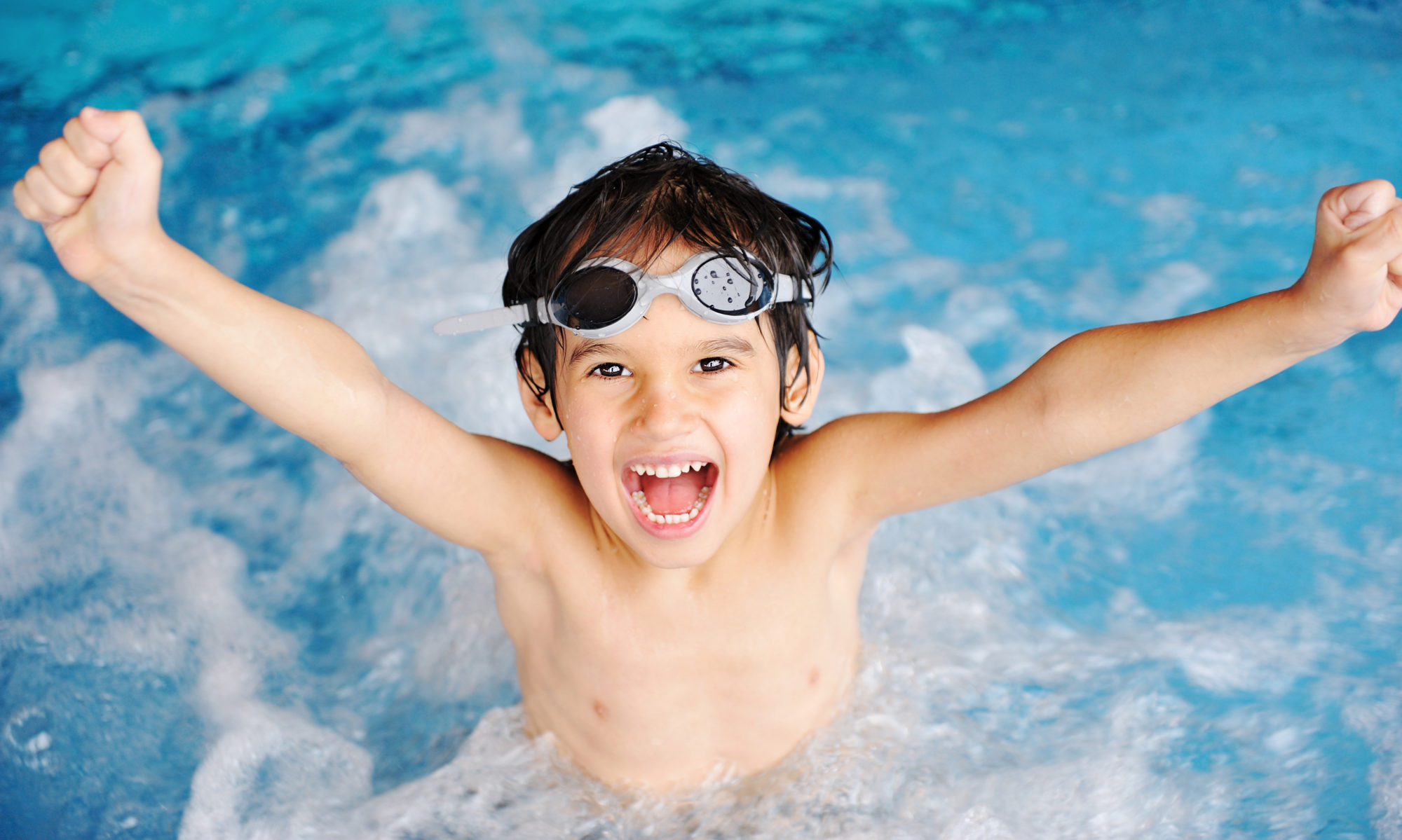Your kids don’t need to learn to turn their heads to breathe to be safe in the water, but if they want to do a true crawl or to swim as fast as possible, they’ll want to. Here’s how to teach this swimming skill.
There’s a lot of awareness of the body required to optimize this swimming skill. At the end of the process, your child will learn that, as his body rolls so that he’s mostly on his side, he’ll turn his head just slightly so that it’s out of the water and he can breathe in through his mouth. He’ll time the breath so that he’ll be looking through a triangle formed by the bent recovering arm and the surface of the water.
The First Step
You can practice on dry land. Have your child put his hands on the edge of a table and move his feet until he can position his upper body into a streamline position on a plane with the surface of the table. Have him hold onto the edge of the table with one hand—let’s call this the stroking arm—and gently touch the table with the other hand—let’s call this the recovering arm. Ask him to twist his torso, turning so that the shoulder of the recovering arm lifts toward the ceiling. The hand of the recovering arm might lift a few inches off the table, too. Have him notice the position of his head relative to the recovering arm.
